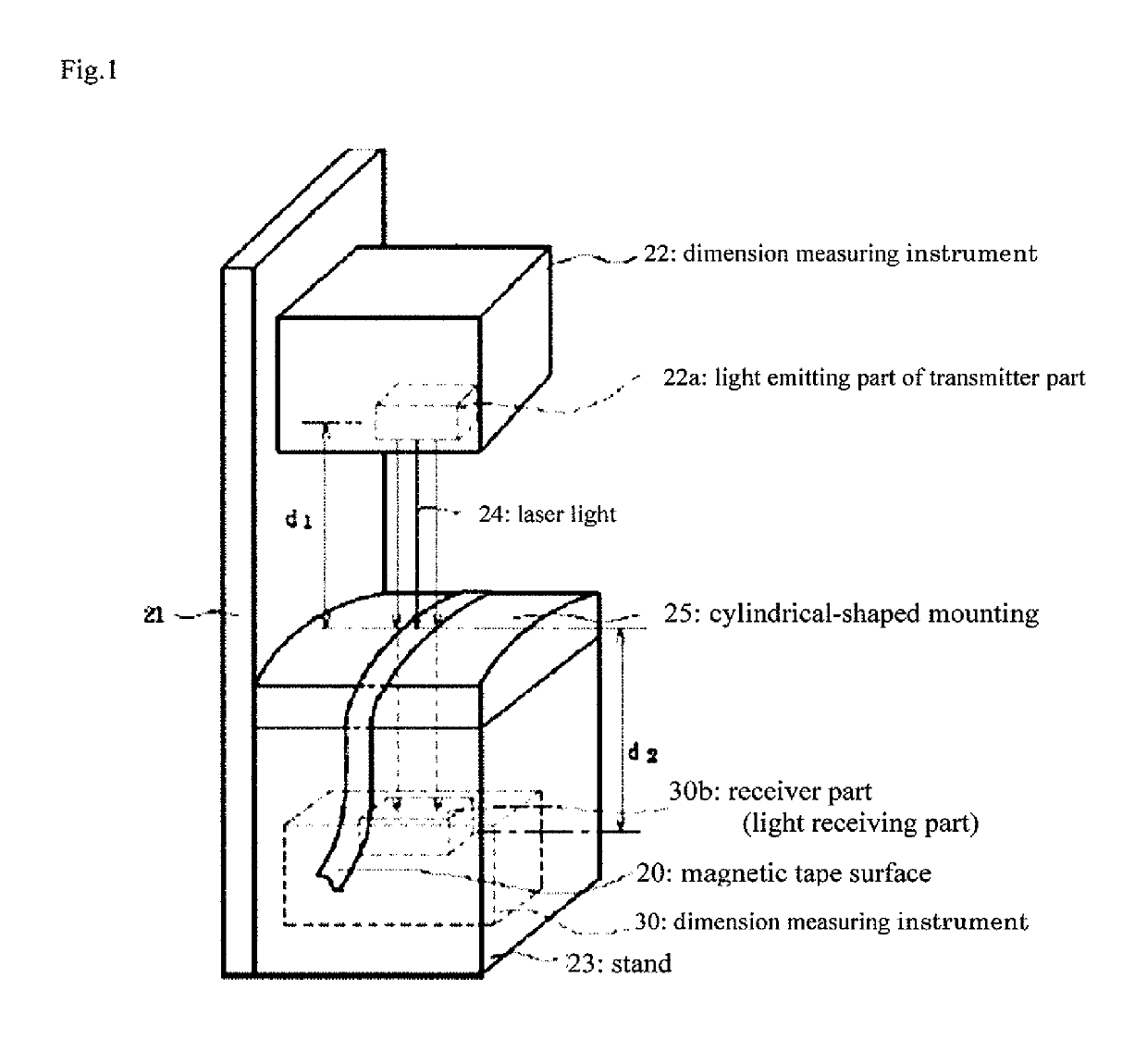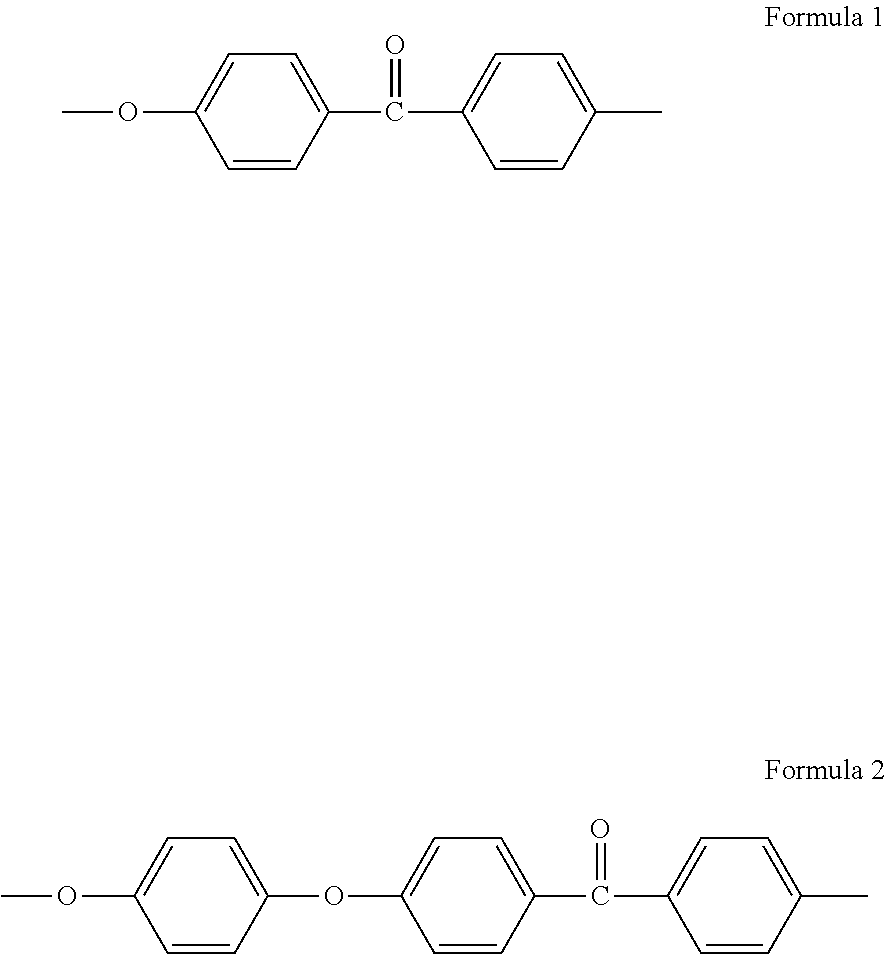Resin film
a technology of resin film and tape, applied in the direction of instrumentation, record information storage, mechanical tension control of the carrier, etc., can solve the problems of increasing the cost of the substrate, affecting the dimensional stability of the substrate, and requiring a large change in the tension applied to adjust etc., to achieve the effect of improving the dimensional stability against environmental changes, and easy adjustment of the tape width by tape tension
- Summary
- Abstract
- Description
- Claims
- Application Information
AI Technical Summary
Benefits of technology
Problems solved by technology
Method used
Image
Examples
example 1
[0171]PEN resin composition 1, which contained 0.1 wt % of cross-linked polystyrene particles having a mean particle size of 0.2 μm and has intrinsic viscosity (ortho-chlorophenol, 35° C.) of 0.60 dl / g, was dried at 180° C. for 5 hours in the form of chip, supplied to the hopper of an extruder, melted at 300° C. in the extruder, and extruded from a T die onto the surface of a casting drum which had a surface finish of 0.3 S and a surface temperature of 60° C., and quenched and solidified to obtain an unstretched film.
[0172]The resulting unstretched film was preheated at 120° C., stretched 4 times between a low speed roll and a high-speed roll by heating with an infrared heater with a surface temperature of 830° C. located 14 mm above the film, quenched, then supplied to a stenter, and stretched laterally 4.6 times at 150° C., and to further laterally 1.25 times at 160° C., and was heat set at 205° C. for 3 seconds to obtain a film having a thickness of 3.0 m. The Young's modulus of ...
examples 2 and 3
[0173]A biaxiall stretched film was obtained using PEN resin composition 1 of Example 1 in the similar manner as in Example 1 except that the stretching ratio and the thickness were changed as described in Table 1. The characteristics of the film and magnetic tape obtained are shown in Table 1.
example 4
[0174]Dimethyl 2,6-naphthalenedicarboxylate (95 parts), dimethyl isophthalate (4 parts) (5 mol % based on the total amount of all dicarboxylate components) and ethyleneglycol (60 parts) were subjected to transesterification using manganese acetate tetrahydrate (0.03 parts) as a transesterification catalyst and adding silica particles having a mean particle size of 0.3 μm (0.1 wt %) as a lubricant in accordance to normal procedure in the art, and trimethyl phosphate (0.023 parts) was added to the reaction mixture to terminate the transesterification substantially.
[0175]Then, antimonous oxide (0.024 parts) was added to the mixture, and the mixture was polymerized in accordance to normal procedure in the art, under high temperature and high vacuum to obtain PEN resin composition 2, which had intrinsic viscosity (ortho-chlorophenol, 35° C.) of 0.61 dl / g and is a polyethylene-2,6-naphthalate copolymer (DEG copolymerization amount 1.1 mol %) containing silica particles. The copolymer obta...
PUM
 Login to View More
Login to View More Abstract
Description
Claims
Application Information
 Login to View More
Login to View More - R&D
- Intellectual Property
- Life Sciences
- Materials
- Tech Scout
- Unparalleled Data Quality
- Higher Quality Content
- 60% Fewer Hallucinations
Browse by: Latest US Patents, China's latest patents, Technical Efficacy Thesaurus, Application Domain, Technology Topic, Popular Technical Reports.
© 2025 PatSnap. All rights reserved.Legal|Privacy policy|Modern Slavery Act Transparency Statement|Sitemap|About US| Contact US: help@patsnap.com



